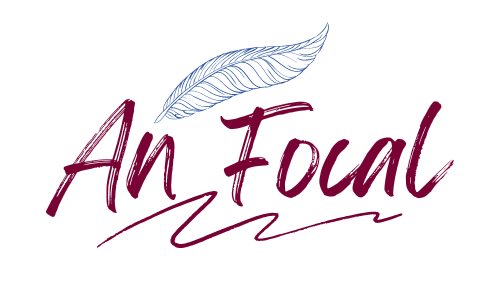Growing up on the Irish border, I was always curious about the broken land that lay ten kilometres ahead of me. This curiosity only grew as I got older, hearing of my parents’ experiences. The windows of my mother’s house once shattered from the blast of a nearby IRA bomb, and my father would fear for his life when getting stopped by RUC officers at checkpoints. I couldn’t imagine that there was a war that lasted for 30 years, on my doorstep.
With the 25th anniversary of the Good Friday Agreement recently passed, all it could take to change Northern Ireland’s tentative peace is the strike of a match.
Johnny Watterson was 12 years old when his 14-year-old brother Peter was shot dead outside their house on the Falls Road, Belfast in 1972. At just 12, Johnny had experienced more hardship than most people do in their lifetime.
“I’m still trying to find out what happened,” Johnny explained. “The police didn’t show up. It was dark and they were scared of being attacked.” The RUC showed up the next morning, with no answers. Johnny left Belfast after his brother’s funeral and has since spent his much of his life trying to figure out who killed his brother.
Peter Watterson was one of over 3,500 casualties of the Troubles. Protestants and Catholics alike had become accustomed to tit-for-tat killings by paramilitaries on either side. “Glass on the roads, burnt-out lorries and riots became the landscape. Rubber bullets were part of the everyday experience of going to school,” said Johnny. For many Catholics like Johnny, it wasn’t the threat of paramilitaries that scared them the most. It was the British Army.
When the British army arrived in Northern Ireland in 1969, the Catholic population saw them as coming to their defence. They had been relying on the IRA as their police force. They welcomed the Army into in a place where they couldn’t trust their own police. This changed within a year and the Army became the enemy and remained that way. This was also the case for Anne McLean, who lived in Derry. Anne raised her children in the Bogside, which was heavily patrolled by the British.
“You would look out your window and see British soldiers’ at your garden gate with their guns. They’d call the kids over to show them their guns, but really, they were using the children as shields,” Anne described. “The danger was from the Brits and the RUC where I lived, not the paramilitaries.”
There is no doubt that Northern Ireland has changed dramatically over the past 25 years, for the better. Johnny and Anne’s stories are thankfully not the norm for the region anymore. The successes of the Good Friday Agreement are undeniable and have transformed the North. There is no British Army on the streets anymore and the threat of violence remains relatively low. But the North’s troublesome past rises to the surface every now and again, which makes one wonder if the celebrated agreement that took three nations to build is failing its purpose.
Paramilitaries are still deeply rooted in Northern Irish society and have become increasingly active in the last ten years. It is a fundamental issue that the Good Friday Agreement painted over but did not resolve. The emergence of the New IRA has been met mostly with anger and resentment, especially after the killing of journalist Lyra McKee. This murder of the 29-year-old shook all of Ireland and served as a stark reminder that these dissidents on both sides are let to lie like sleeping dogs.
The New IRA continue to recruit and train, after their latest shooting of a PSNI officer this year. The group are sinister, but their numbers are weak. It is clear that most of Northern Ireland’s residents do not want a return to the bloodshed, but austerity and uncertainty from a collapsed Government has caused huge issues in the North, dragging vulnerable youth into paramilitary gangs.
“People feel cheated by Stormont laying still. Poverty and depravation are rife and there is no one representing the people in the North to counteract this, it is very frustrating,” said Anne.
The main and central vision of the Good Friday Agreement has failed. Power sharing has proven unsuccessful, and it may be time for the mandatory coalition mandate to be lifted.
“Only things on the surface changed and of course we’ve had relative peace but at the same time the society and basic divisions were never addressed. Eventually this will rise to the surface again,” Anne explained.
Additionally, segregation in schools and daily life is another issue that has not been resolved. Today’s children of Northern Ireland have no memory of the violence but are raised knowing which ‘side’ they belong to. The progress on integrated education is slow, but it is supported. Mixed schools promote reconciliation and could help eradicate the divide between Protestants and Catholics in a secular society, where children learn and grow in one environment. It is one of many major reforms needed in the North to allow for improvement and lasting peace in their society.
The peace walls of Belfast and Derry still divide Protestants and Catholics. Whilst these walls are meant to represent peace, they more so serve as a barricade between the two communities. These walls may never come down, they have become somewhat a necessity in society, keeping the groups apart for better or for worse.
“25 years into peace and the walls are still there. I can’t see them coming down, but I’ve been wrong so often, I couldn’t see the Troubles ending in my life and essentially, they did,” Johnny Watterson said. “They certainly can’t come down now, there’s more need for them now than ten years ago. They won’t come down when you have Catholics and Protestants living a back wall away from each other. Fundamental attitudes haven’t changed. People still live in their own mentalities; the mistrust is still there.”
Johnny acknowledges that whilst the Good Friday Agreement is flawed in some respects, it has been revolutionary in others. “It’s the best thing that ever happened, its completely transformed the place.” I could hear the bittersweet enthusiasm in Johnny’s voice as he explained how he feels.
“You have to look at it in terms of daily life on the Falls Road, the Shankill and South Armagh and their lives have improved beyond recognition. There is no standing threat of violence, there’s more middle ground because most people among the general public have realised their lives are better without violence.”
Flawed and outdated as it is, the Good Friday Agreement still stands. The unique deal has held its purpose as a model for peace, and as the greatest success in Northern Irish politics.
When you visit Northern Ireland, you can feel its history lingering in the air. The broken land cannot be fixed with all the bandages in the world. There is an invisible mist that has entrapped the ghosts of all the lost lives. The mass trauma of the Troubles is bigger than the entirety of the North. However, it is not all doom and gloom. The people of the North are resilient. They know their lives are better without violence. There are too many open and unhealed wounds 25 years after peace to resort back to the way things were.
Johnny Watterson now works as a journalist for The Irish Times, but every day he fights to find out who murdered his brother, 51 years ago. Thousands of people like Johnny are still haunted daily by the atrocities of the Troubles. The sense of community in the North, although divided, is strong. Catholics and Protestants can agree on one thing – peace. Dissident paramilitary groups do not speak for the majority of the population.
The fate of Northern Ireland is ever changing and because of that, it is left unknown. The prospects of a border poll are welcomed by some and discarded by others. A united Ireland is inevitable, and when it comes there is no guarantee the reunified state will live entirely in peace. However, it is a risk that many are willing to take.
The knowledge I have gained about Northern Ireland throughout my life has not stopped my curiosity from growing. I listen intently to the stories of my parents, of Johnny, and of Anne, and I keep them as a reminder of what life could be like without peace. I was born just four short years after the Good Friday Agreement. I, luckily and merely, missed out on the dangerous lives my parents and so many others lived through. This makes me feel a certain level of responsibility to learn stories about this forgotten war and share them.
I know violence will not free Northern Ireland. Too many people had to die to get to the point where we are now to even think about it. I hope to see Irish unity in my parents’ lifetime, and while it sometimes appears to be close, it also has never felt so far away.
![]()


